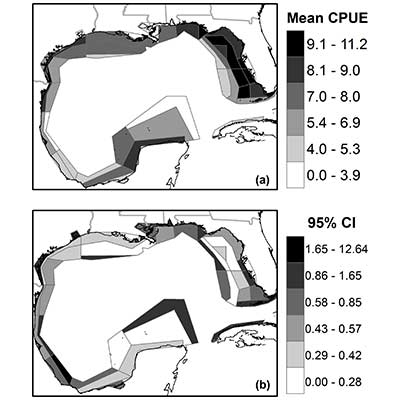
Generalized Additive Models Used to Predict Species Abundance in the Gulf of Mexico: An Ecosystem Modeling Tool
Generalized Additive Models Used to Predict Species Abundance in the Gulf of Mexico: An Ecosystem Modeling Tool
Spatially explicit ecosystem models of all types require an initial allocation of biomass, often in areas where fisheries independent abundance estimates do not exist. A generalized additive modelling (GAM) approach is used to describe the abundance of 40 species groups (i.e. functional groups) across the Gulf of Mexico (GoM) using a large fisheries independent data set (SEAMAP) and climate scale oceanographic conditions. Predictor variables included in the model are chlorophyll a, sediment type, dissolved oxygen, temperature, and depth. Despite the presence of a large number of zeros in the data, a single GAM using a negative binomial distribution was suitable to make predictions of abundance for multiple functional groups. We present an example case study using pink shrimp (Farfantepenaeus duroarum) and compare the results to known distributions. The model successfully predicts the known areas of high abundance in the GoM, including those areas where no data was inputted into the model fitting. Overall, the model reliably captures areas of high and low abundance for the large majority of functional groups observed in SEAMAP. The result of this method allows for the objective setting of spatial distributions for numerous functional groups across a modeling domain, even where abundance data may not exist.


